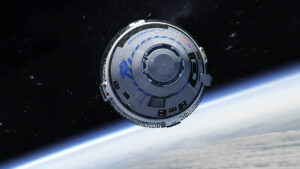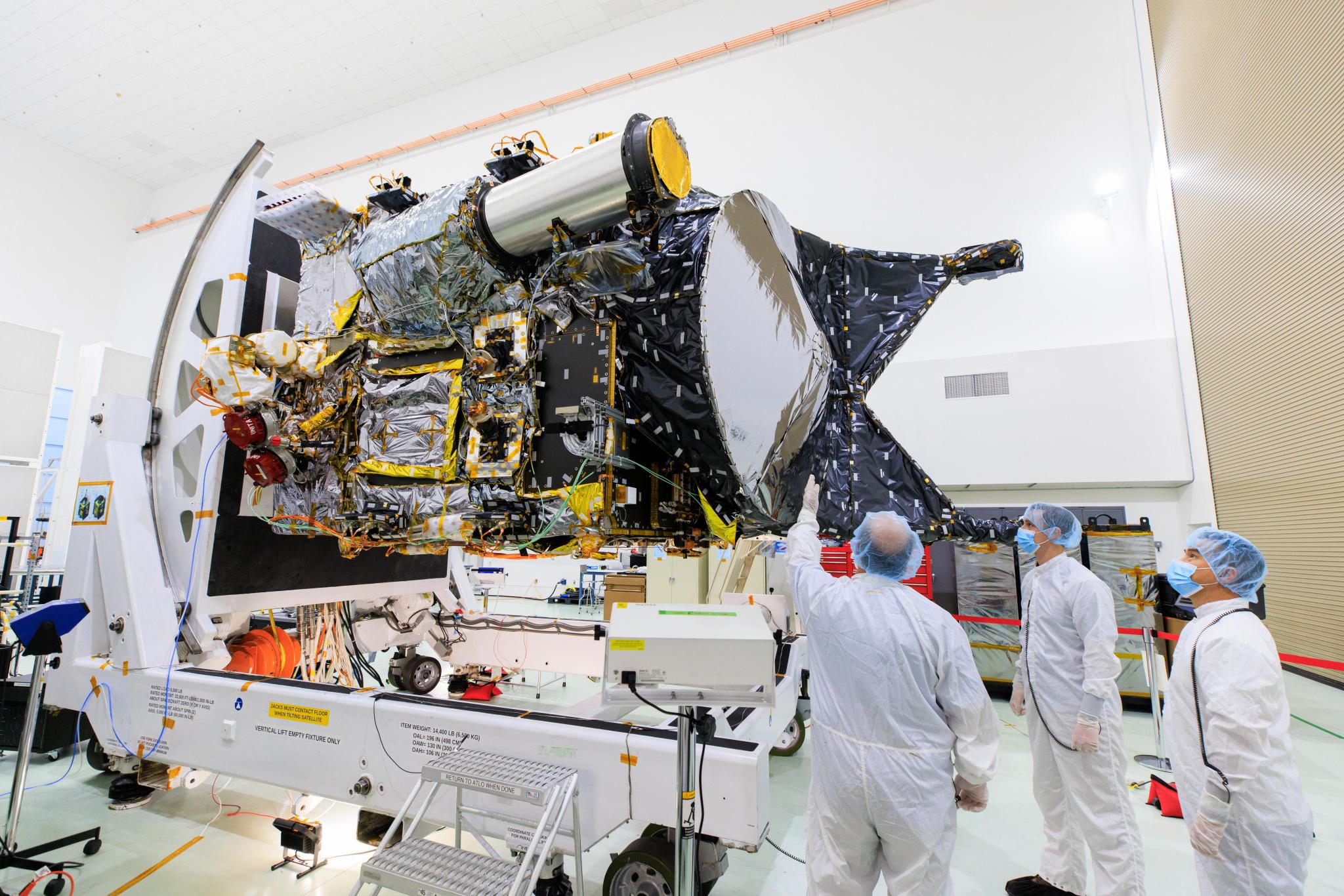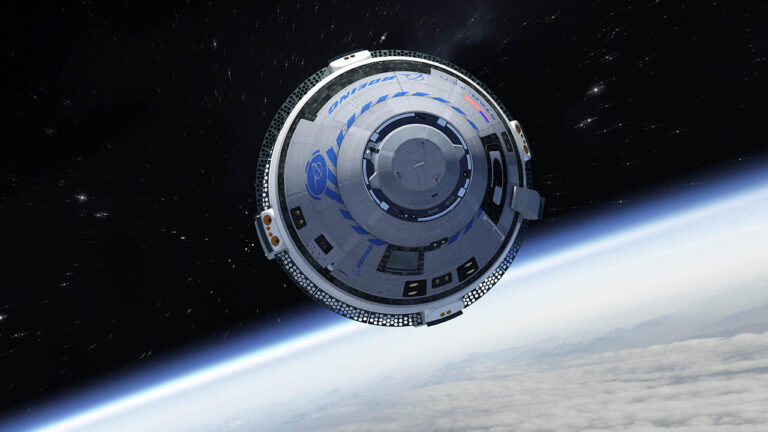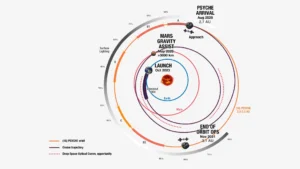Unlocking the Mysteries of Asteroid Psyche: NASA’s Psyche Spacecraft
Picture a spacecraft so colossal that, with its solar panels fully extended, it could almost cover a tennis court. This awe-inspiring creation is none other than NASA’s Psyche spacecraft, a marvel of engineering and a vessel on a groundbreaking mission.
For Mission Details, visit https://runway101.com/nasa-psyche-mission-few-days-to-metal-asteroid/
The Foundation of Psyche
Psyche’s core systems, including its main computer, flight software, and vital safety features, all find their origins in NASA’s Jet Propulsion Laboratory (JPL) located in Southern California. As for the spacecraft’s physical structure and essential engineering components, they hail from a division of Maxar Technologies in Palo Alto, California.
Yet, Psyche isn’t just a sum of its parts; it’s a platform for innovation. Attached to Psyche is the Deep Space Optical Communications (DSOC) experiment, a cutting-edge initiative by NASA set to test the boundaries of optical, or laser, communications beyond the Moon.
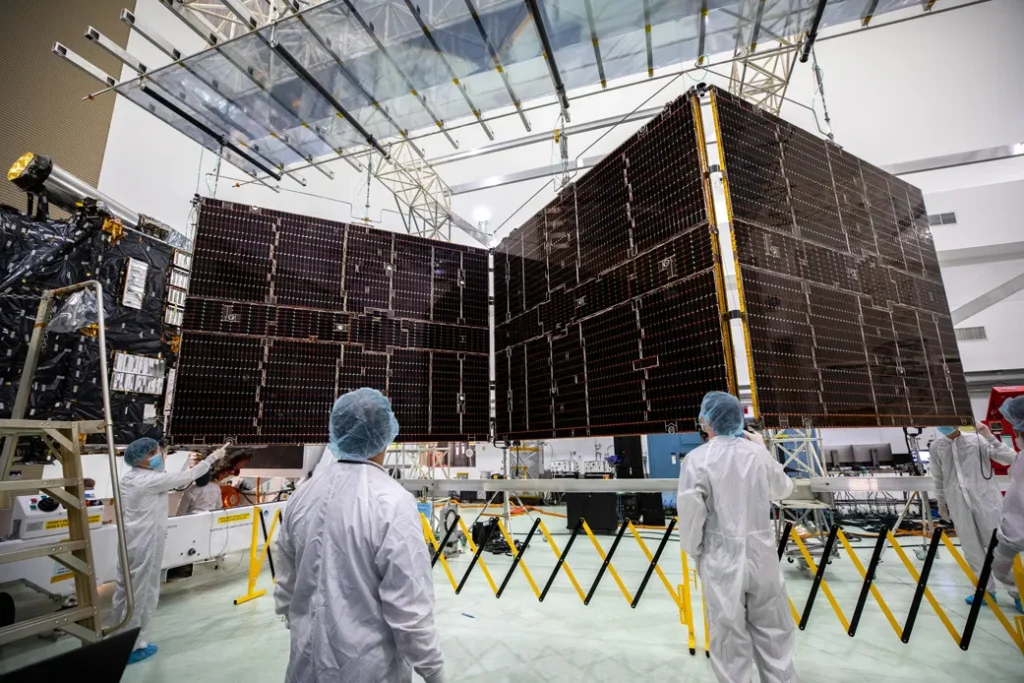
Diving into Specifications
- Size: Envision a spacecraft stretching approximately 81 feet by 24 feet, almost resembling a tennis court in its dimensions. The main body of Psyche stands at 16.1 feet tall, which includes two 6.6-foot booms designed to accommodate various instruments. Its width spans 7.1 feet, while its depth reaches 7.8 feet.
- Mass: When Psyche embarks on its journey, it will boast a mass of up to 6,056 pounds. This figure includes the DSOC technology demonstration. Notably, the total launch mass, encompassing the rocket, stands at a staggering 3.16 million pounds, with the rocket accounting for more than 99% of that colossal weight.
- Power: Psyche derives its energy from two five-panel solar arrays cleverly arranged in a cross shape. These panels will generate 21 kilowatts of power as Psyche departs Earth and between 2.3 to 3.4 kilowatts during its orbital dance around the asteroid.
- Propulsion: Psyche operates on solar electric propulsion, driven by four Hall-effect thrusters. These thrusters employ electromagnetic fields to expel charged atoms, or ions, of xenon gas, resulting in thrust and a distinctive blue xenon glow. Interestingly, only one thruster is utilized at any given time, offering up to 240 millinewtons of thrust—equivalent to the force required to hold a single AA battery. Psyche carries seven 22-gallon tanks of xenon propellant, weighing up to 2,392 pounds.
- Telecommunications: Communication with Earth is facilitated by four antennas: one fixed 6.5-foot high-gain antenna provided by Maxar and three small low-gain antennas crafted by JPL. Psyche connects with Earth via the Deep Space Network, NASA’s interplanetary communication system.
A Symphony of Scientific Instruments
- Multispectral Imager: At the heart of Psyche’s scientific toolkit resides a pair of identical cameras equipped with filters and telescopic lenses. These cameras capture the asteroid’s surface in various light wavelengths, including those imperceptible to the human eye.

- Gamma-Ray and Neutron Spectrometer: Psyche boasts an advanced gamma-ray and neutron spectrometer, an instrument that helps scientists ascertain the chemical elements constituting the asteroid’s surface material. When cosmic rays and high-energy particles interact with Psyche’s surface, the elements there absorb energy and respond by emitting neutrons and gamma rays with different energy levels. This spectrometer adeptly detects these emissions, allowing scientists to match them with properties of known elements, ultimately unveiling the composition of Psyche.
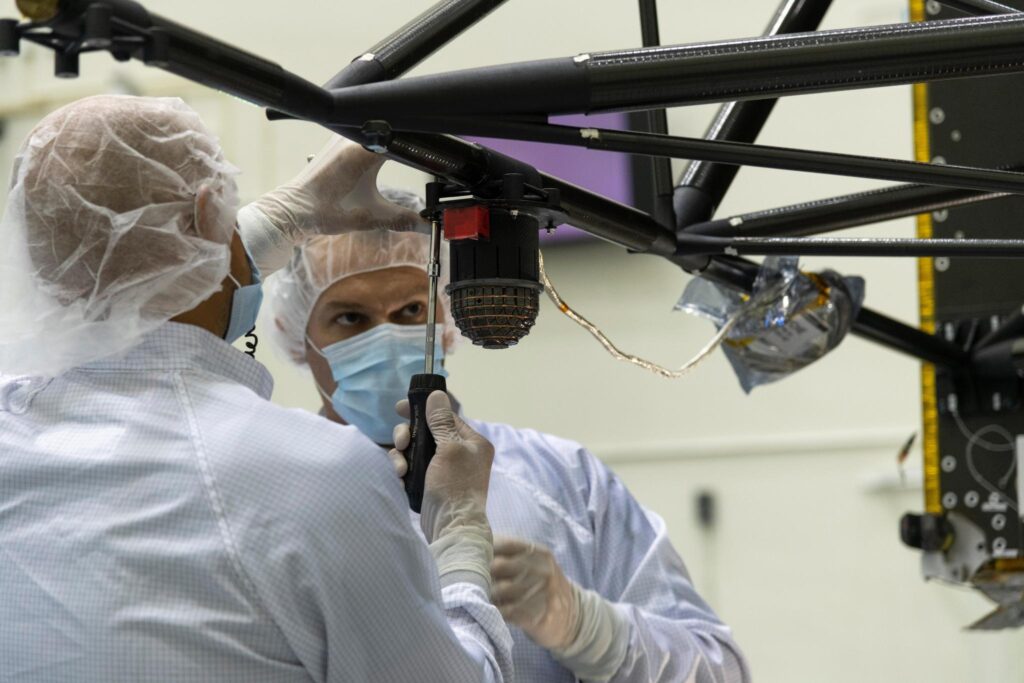
- Magnetometer: This instrument serves as Psyche’s magnetic compass. Its primary mission is to seek traces of an ancient magnetic field around asteroid Psyche. This is particularly significant because unlike Earth and other rocky planets, small celestial bodies like asteroids do not naturally generate magnetic fields. The presence of a remnant magnetic field at Psyche could serve as compelling evidence that the asteroid originally formed from the core of a planetary body.
- Gravity Science: Psyche’s science team leverages the spacecraft’s telecommunications system, typically used for sending commands and receiving data, to conduct gravity science experiments. Through meticulous analysis of the X-band radio waves that Psyche uses for communication, scientists can measure how the asteroid affects the spacecraft’s orbit. This wealth of data allows scientists to deduce essential parameters, including the asteroid’s rotation, mass, and gravity field, thereby offering vital insights into Psyche’s interior composition and structure.
- Deep Space Optical Communications (DSOC): Bolted to one side of the Psyche spacecraft is a pioneering technology experiment known as NASA’s Deep Space Optical Communications, or DSOC. DSOC introduces a near-infrared laser that marks NASA’s inaugural attempt at high-bandwidth optical communication between Earth and spacecraft positioned at distances far beyond the Moon.
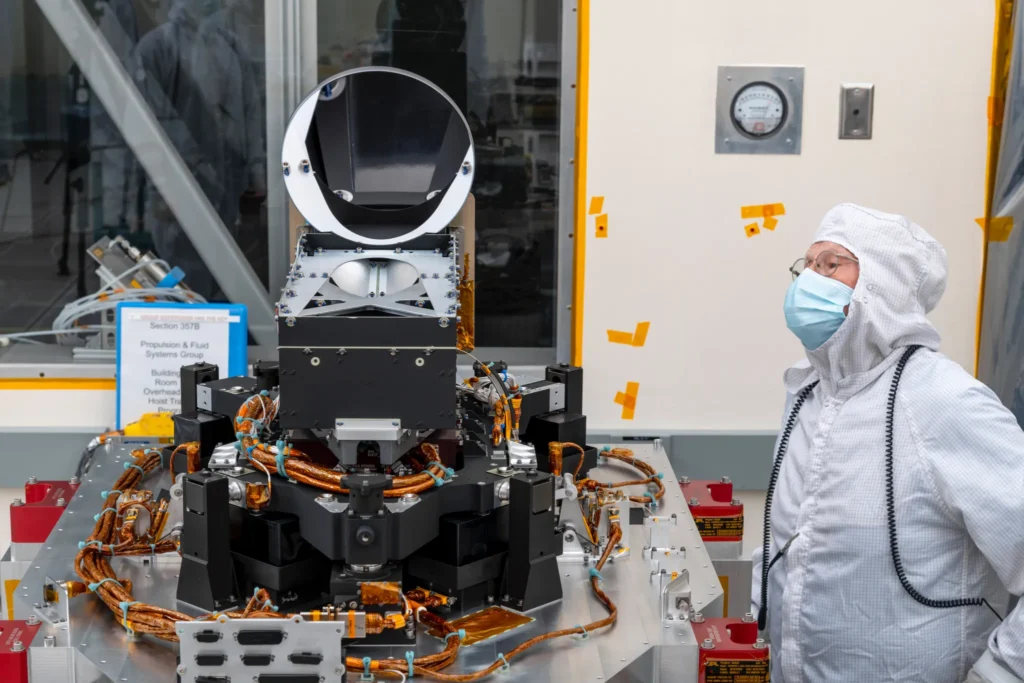
The Future of Data Communication
While DSOC isn’t designed to relay mission data during Psyche’s initial years, its success could redefine the future of space communication. By potentially offering higher data rates without the need for significant hardware size, mass, or power increases, DSOC paves the way for ambitious space missions, including those that involve sending astronauts to Mars.
In conclusion, NASA’s Psyche spacecraft stands as a testament to human ingenuity and the unending pursuit of knowledge. It embarks on a journey that promises to uncover the secrets of a truly unique, metal-rich asteroid. Stay tuned for further updates as we venture deeper into the cosmos, forging new frontiers of space exploration.
Photos: NASA
